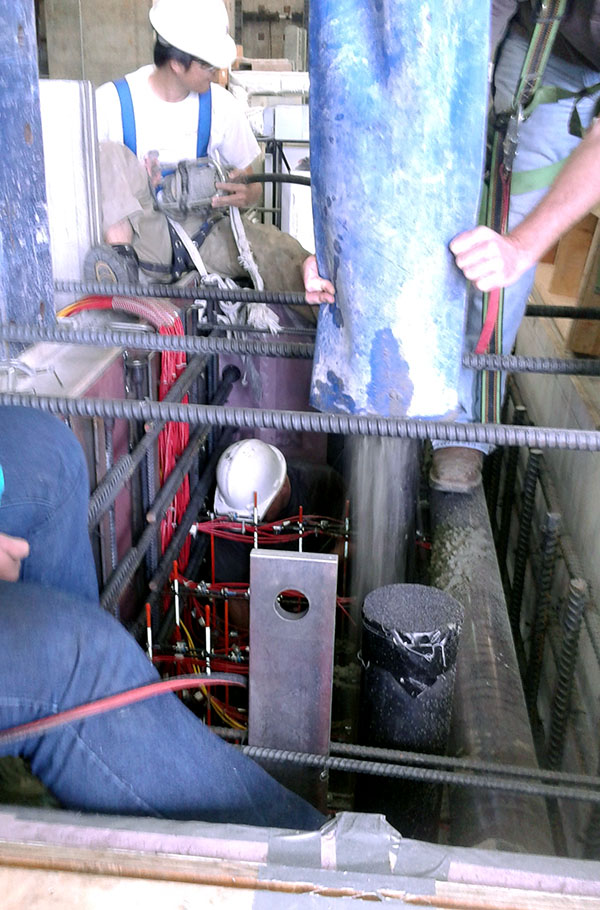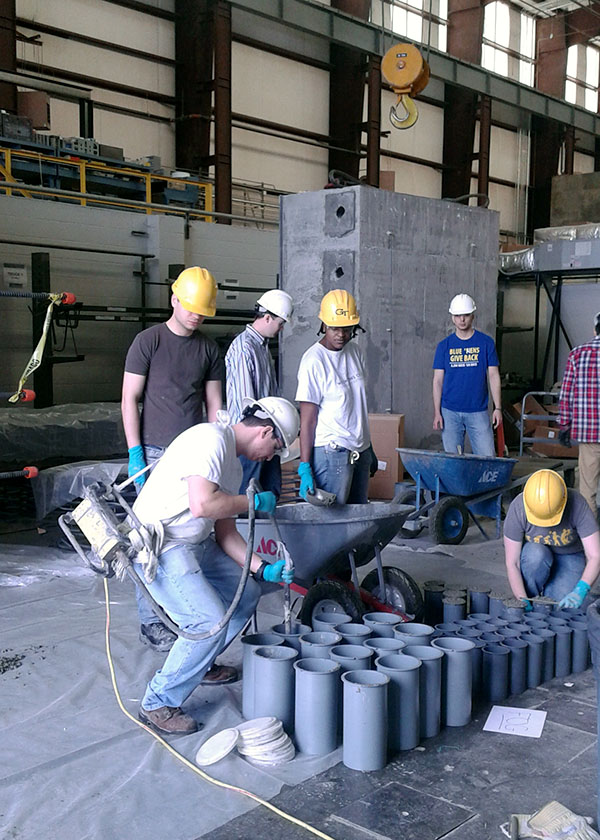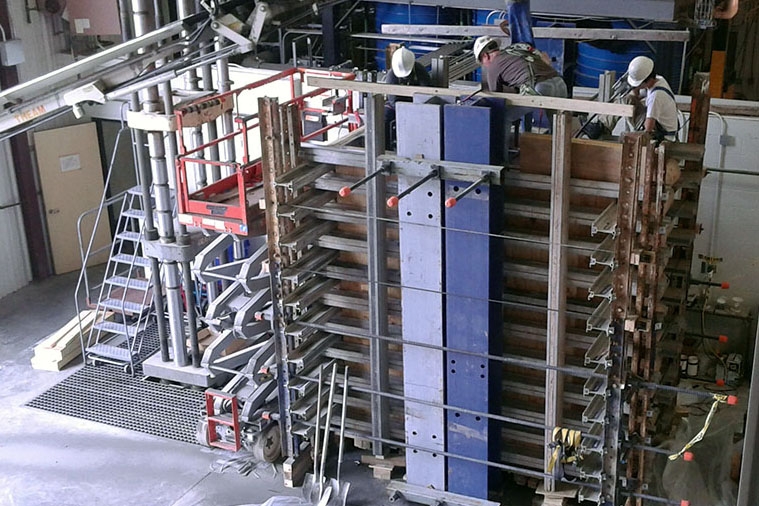 The Crystal River nuclear power plant in Crystal River, Florida. Duke Energy announced in February 2013 it would shut down the plant as a result of cracks in the concrete containment building that proved too difficult and expensive to repair. Ph.D. researcher Bradley Dolphyn is working on a project to better understand what caused those cracks. (Photo Courtesy of Bob Webster via Wikimedia Commons.) |
The unexpected announcement came in February 2013:
Duke Energy had decided to shutter its Crystal River 3 nuclear reactor in Florida.
At the time, it had been four years since workers discovered cracks in the plant’s concrete containment building. They’d cut through the 42-inch-thick structure to perform what were considered relatively routine upgrades and to replace the reactor’s steam generators. In the process, they identified a cracked a section of the building. And then, as repairs where nearing completion, they found a similar crack on the other side of the structure. The plant has been shut down ever since.
It’s a situation that ultimately will cost Duke Energy and its Florida customers hundreds of millions of dollars. The cause of the damage has been attributed to a combination of elements — among them, poor shear capacity of the concrete and the procedure that released the tension on the steel tendons in the structure — but the issue remains poorly understood.
 Ph.D. student Bradley Dolphyn stands inside the formwork as other students and Structures Lab staff help pour concrete. Dolphyn needed a full-scale section of wall just like the Crystal River 3 containment building that failed so he could assess the concrete's behavior. (Photo Courtesy of Bradley Dolphyn.) |
|
That’s where Bradley Dolphyn comes in.
The School of Civil and Environmental Engineering doctoral student is working with professors Lawrence Kahn and Kim Kurtis to figure out just what happened to the massive concrete building. An industry group, the Electric Power Research Institute, is supporting their work.
“This is the first time this [kind of cracking] has been identified anywhere beyond the first few years of a plant’s life — in this case, 30-plus years,” Dolphyn said. “So [we’re] trying to get an understanding of why this plant might be different.”
Dolphyn said there had been no indications of problems with the structure before workers opened it to gain access to the steam generators.
“Before they visually identified [the cracking], there wasn’t any noted indication that anything was wrong,” he said. “That’s one of the aspects we’re trying to look at, understanding how this cracking developed mechanically, the factors structurally or mechanically that would’ve contributed to it, in terms of the concrete, and in general, if this is an isolated scenario or something that might be relevant to other similar structures in the U.S.”
Dolphyn said about 30 such buildings exist at the country’s 99 operating nuclear reactors, so that last part is an important question to answer.
 Bradley Dolphyn and other students work on a full-scale mock-up of Crystal River 3's containment building in March 2015. Dolphyn built a replica of a portion of the wall and recreated the concrete used for the original structure. (Photo Courtesy of Bradley Dolphyn.) |
To find out, Dolphyn and the team at the School’s Structural Engineering and Materials Laboratory built a full-scale mock-up of the containment building’s wall.
Not the full 200-foot height or the 140-foot outer diameter. That’s not practical. Instead, they poured two sections 10 feet high, 9 feet long, and 42 inches thick. It’s the same height as each of the concrete pours for the actual building.
Dolphyn also used the same kind of materials to make the concrete and put steel reinforcement in the same places as the original Crystal River 3 containment building. In addition, he made hundreds of cylinders of the same concrete to study how it cures — some at conditions identical to the giant wall and some at a standard 73 degrees Fahrenheit in a fog room.
That’s where his first potentially important discovery has come.
 Student researchers cast concrete cylinders with the material used to make a full-scale wall section from the Crystal River 3 containment building. The behavior of these samples is giving Ph.D. student Bradley Dolphyn clues about why the building cracked. The replica wall is visible in the background. (Photo Courtesy of Bradley Dolphyn.) |
|
Concrete generates heat as it cures, so the center of massive structures like the containment building’s walls gets really hot as the material hardens.
“In general, standard-cured specimens, [the ones cured] in the fog at 73 degrees, are tested for acceptance of the concrete in the actual structure,” Dolphyn said. “What we found is the concrete that matches the temperature in the wall had notably lower strength than the fog-cured specimens. That suggests that at these later ages, perhaps when they did identify the cracking, the concrete wasn’t as strong as they would have expected.”
Dolphyn said other researchers have documented this temperature influence in concrete. But in the case of the Crystal River 3 building, the primary investigation doesn’t seem to have looked into or accounted for the temperature effect on the later-age strength.
Dolphyn is just getting into his data, but he said if he finds that the containment building’s problem was the result of the temperature behavior in the concrete, that might be an issue that stretches beyond nuclear power plants to other huge concrete structures.
Ultimately, Dolphyn said his work will help the nuclear power industry better understand how these massive containment buildings behave over decades. He’ll also be able to suggest design changes to improve their performance or help them make similar steam generator repairs without causing similar damage.
The study also has helped Dolphyn see where his career could go after he finishes his dissertation.
“This research is more of what might be considered a forensic investigation — trying to figure out what happened, what causes this, why was this observed? That was something that I never really thought about in engineering before,” Dolphyn said. “It piqued my interest to see that kind of approach, and in working on this, I can see myself now probably going into that kind of forensic engineering.”

